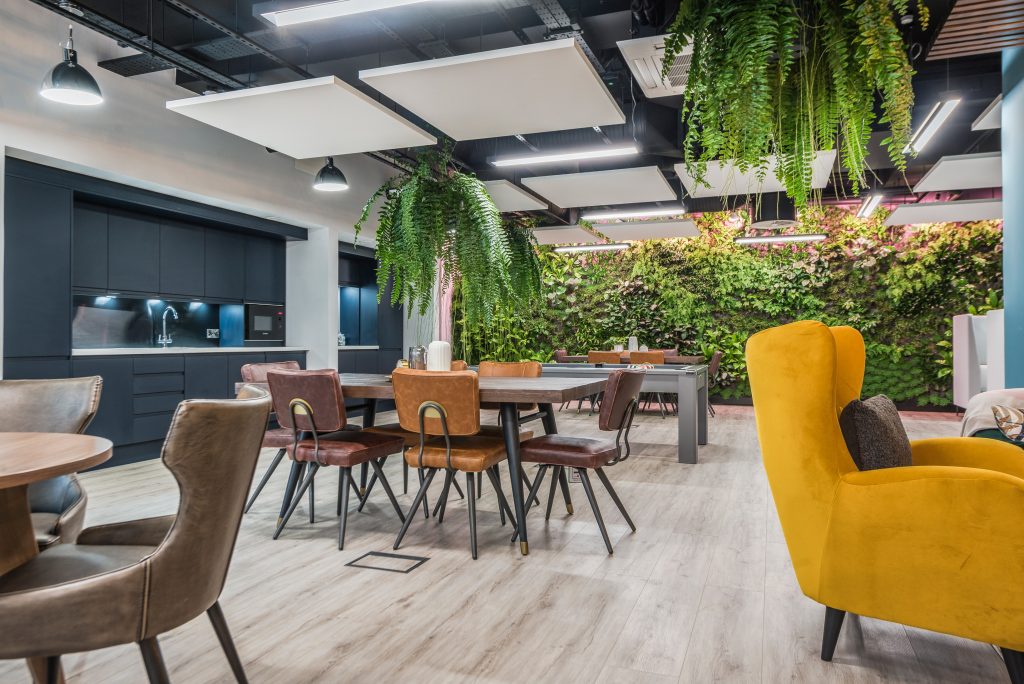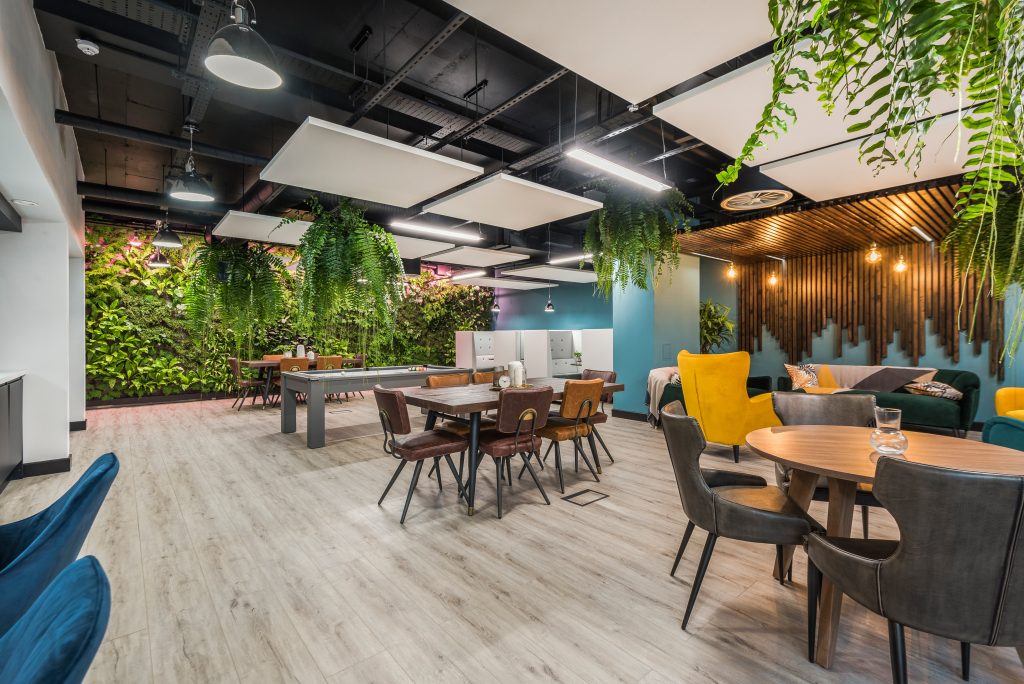As the Build to Rent market expands, things are changing quickly. With the sector enjoying real growth, consulting with an experienced operator early in the design cycle can add substantial value through the design process.
This article provides some key learnings on how to maximise rents for a client.
First, click below for a Case Study of a scheme in High Wycombe, a commuter town just outside London
Originally created as a build to sell product, on appointment Touchstone helped the client convert it to a BTR scheme. This meant carrying out research and offering advice quickly.
With just six months to practical completion (PC), we reviewed the build specification. Based on our market research and operating knowledge our recommendations considered how the building needed to be adapted for an on-site team, what communal space was needed, specifically amenity space. We also reviewed the apartments to ensure they were fit for purpose for the target market and made suggestions including:
- Wardrobes in all bedrooms: Our customer feedback tells us storage is one of the most important considerations when customers view a property
- Flooring: We chose hard wearing, long lifecycle flooring (the original spec did not include flooring)
- Full length mirrors in the bathrooms to add a high-end feel
- Built-in appliances added to all kitchens to differentiate from a traditional PRS product.
All these decisions were signed off three months prior to PC, meaning we had a short timeframe to work to. More typically, a client would bring on the managing agent 12-24 months pre-PC to discuss building specification to ensure the build is targeted to BTR rent levels. We used CGIs of approved designs to draw in customers prior to let up.
In tandem, we re-appraised the ground-floor commercial units and recommended one should be used to create a concierge and management space, a residents’ lounge, and a co-working space with shared kitchenette and coffee machine.
This had a clear impact on value as the rent appraisal indicated an additional 10-15% to market rents, because we could market a specific BTR product. We used our market insight and rent appraisal methodology to assess the value of these additions.
This included looking at the target demographics and the local market. The rental uplift uses the concept that a resident rents a building rather than an apartment. Customers weigh up the added amenities such as co-working, concierge, free coffee and this leads to many considering the “added value” compared to standard PRS stock. Providing a great customer experience and interaction also leads to achieving increased rent levels.
The ground floor space was completed post PC with a stunning green, living wall. We expect to increase rents in 2022 by 2.5% to 3.5%. The increases are now justified by the amenity space provided to residents.
Phase Two of the ground floor development will utilise the remaining space in the commercial units to create a second residents’ lounge, a private dining room, a commercial kitchen, yoga room, and Wexer studio with changing rooms and WC.
A key element in deciding which spaces to add in Phase Two was to ask our customers what would be most useful to them. We found that fitness and private bookable spaces were preferred. We use surveys like Homeviews to gather mass data from in-house customers.
Research
The core principles of consultancy include assessing the market, understanding what else is available in that location as well as what is planned, and then modelling that against other locations.
Use a range of data and insight information for the target demographic, local market insight, rent levels, demand profiles, absorption rates and wider understandings such as future developments, employment market, transport and ONS data.
This is alongside any existing data insights from current BTR schemes. Analyse ROI for things such as amenity value or the benefit to the rents from outdoor space or balconies.

The living wall at the High Wycombe scheme: Analyse ROI for things such as amenity value or the benefit to the rents from outdoor space or balconies
Get involved early
As the case study shows, the operator can provide true value, particularly to the new wave of investors who do not have experience in delivering and operating BTR.
Operators understand the importance of brand development and can help to develop a strategy well ahead of PC to enable maximum impact during the pre-let phase. Employing the operational team during the mobilisation phase is key to ensuring the smooth transition from final build stage to being fully live and operational.
In addition, an established and experienced operator will have access to significant data that allows recommendations to be made which will ensure a project lasts a lifetime whilst offering an impeccable customer experience.
Consideration needs to be given to the design aspect of a scheme for lifecycle costing and customer usage. Successful schemes need to emphasise how the resident will live and interact with the building and its amenities, so decisions should be made around this. However, standardisation is also important to increase efficiencies. Early input from the operator is therefore key.
It is important to educate investors and developers of the need to ‘bake in’ requirements at planning to avoid expensive amendments further down the line. By getting involved at design, or even at site-identification stage, the operator can help develop a product that not only fits the BTR brief and considers how best to design for the target customer but considers also how the building can be designed to be as operationally efficient as possible.
This includes:
- Understanding what mechanical and electrical systems will be most cost effective
- What type of onsite provisions are required for on-site management teams
- How the building will operate day to day
- Understanding the resident service proposition
- How to ensure effective health and safety and compliance requirements
This knowledge effectively saves the developer and owner money long-term and de-risks the asset. Operators should look at what existing and future buildings are providing to understand how the clients’ schemes can compete and future-proof themselves to protect tenancy sustainability and rental growth.
Changes can often be made before PC and final fit, but in lots of schemes, retrofit will not be possible.
All schemes need to be considered based on specific local factors, competition and demographics

Revenue comes from happy customers: Design your scheme with your target market in mind
Know your customer
All schemes need to be considered based on specific local factors, competition and demographics. Acquisition and retention of customers should always be addressed pre-planning. Having chosen the demographic, design the building with resident services in mind. If services are not considered at an early stage, it will be hard to retain customers further down the line.
Revenue comes from happy customers and therefore the importance of customer acquisition and retention strategies being implemented early in the process cannot be underestimated, even in the design changes.
Understand your operating environment
Consider who and what is around in the local area. Will it support the target demographic? What infrastructure is in place or being planned?
If there is not a suitable offering in the area (for example, restaurants, café or specific shops), could any of these be created within the development?
Management strategy
Advise on the operational management strategy bespoke to the building and produce a user manual which includes:
- On-site staffing
- Health and safety
- Compliance
- Security
- Staff accommodation and facilities
- Use of technology
- Health and wellness
- Leasing and marketing
- Utility and void management
Viability
The aspirations for the services and amenities to be offered to customers will not be delivered unless they are correctly costed. These should be reviewed throughout the process at key stages, that is, design, build and let up.
- Do get involved early. Getting involved early not only provides true value, but also prevents expensive additions further down the line
- Do get to know your customer. The importance of customer acquisition and retention strategies being implemented early in the process cannot be underestimated, even in the design changes
- Do understand your operating environment and local amenities to ensure the building and its amenities offer as much as possible to the customer
- Do agree your management strategy which is fundamental to the efficient running of a scheme
- Do get your future proofing right and you will add value, improve the longevity of the building and secure higher and more stable yields
- Do support contractors with defects management to add value and ensure customer satisfaction
Future proofing
Having researched the local area and any comparables, the product needs to be as efficient as possible to meet the expected investment returns. It is vital that adequate consideration is given to the quality of fixtures and fittings. Cheaper items are likely to lead to shorter lifecycles, more repairs and customer dissatisfaction.
Sustainability is an increasingly important consideration as developers and investors need to prove their ESG credentials. Show the client data to show the difference they are making, for example by supporting clients to achieve BREEAM, Fitwel and Wiredscore accreditations.
Getting the future proofing right will add value, improve the longevity of the building and secure higher and more stable yields.
Technology is influencing the fundamentals of managing a property effectively, but driving change isn’t just achieved through design and planning but also the management of communities. It opens opportunities to create additional revenue streams, but it is important that the right choices are made to ensure long-term benefits.
Support contractors
Consider defects management to improve customer service / consultancy with contractors.
By advising contractors and extending the aftercare proposition for defects, an external aftercare pack can be offered as an additional service. The service provided for customers is more streamlined as they have direct contact with those providing defect rectification works – which isn’t always the case when the developer picks up the defect management directly.